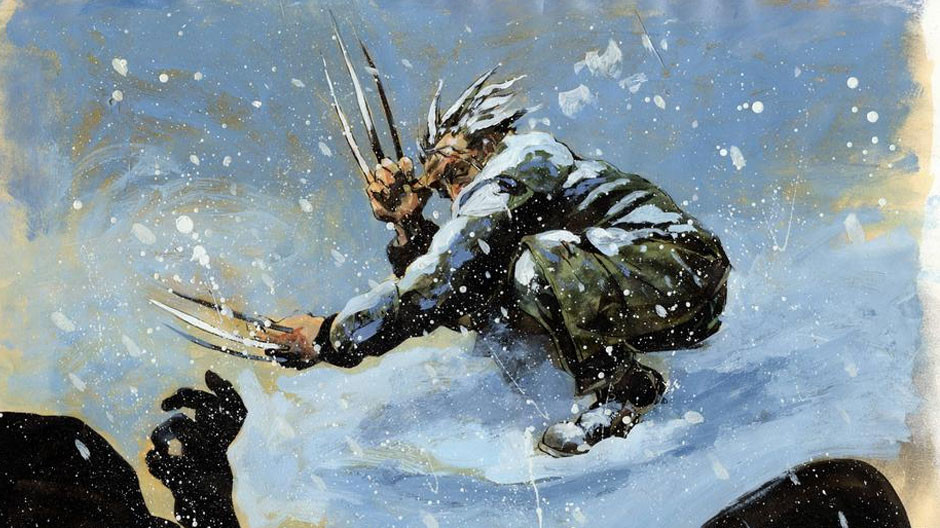
Spider-Man, Iron Man or the Incredible Hulk: Everyone knows the superheroes from the ever-growing Marvel Comics universe. The now world-famous Marvel Comics brand emerged in 1961 from the Timely Comics publishing house, which had been founded in 1939 and had already created successful characters such as Captain America.
Superhero comics were tremendously popular during the 1930s and 40s, but they lost their momentum after the war. During the McCarthy era in the US in the late 40s and 50s, stories featuring exemplary role models were advocated. Comics were believed to harm kids' intellectual development. Superheroes — often broken characters who weren't clearly good or bad — fell victim to a specially established comic book censorship agency.
The resurrection of superheroes
All those rules were broken in the revolutionary 1960s. Comics and superheroes experienced a tremendous renaissance. In collaboration with illustrators such as Jack Kirby and Steve Ditko, Marvel comic author Stan Lee created characters that became cult, including the Fantastic Four, Hulk, Spider-Man and Iron Man.
Marvel's return to superheroes was also inspired by the success of their rival, DC Comics, who were giving a comeback to Batman, Superman and Wonder Woman and other classics. The competition between the two publishing companies had existed since the 1930s; they constantly tried to outdo each other with new ideas.
The golden age of comics
Written by Marvel author and editor Roy Thomas and published in several languages, the book traces Lee's impact on global pop culture. Through its 400 pages, it draws readers into the world of "mighty heroes, misunderstood monsters and complex villains" in stories of fantasy, magic, and science fiction, mixing classical epic plots with modern narratives.
The book revolves around central Marvel characters: Spider-Man and the Fantastic Four, the Hulk and the X-Men. Large illustrations and much smaller image series represent the many superhero stories Marvel's drawers and writers serve up to a mostly — but not only — younger audience in comics and films.
The blockbuster comeback
Marvel bounced back by selling film rights to large studios, allowing the comic book empire to enjoy a second golden era. Today, film franchises such as X-Men, Avengers or Spider-Man are among Hollywood's most successful productions. With films like Black Panther or Black Widow with Scarlett Johansson, Marvel has successfully given itself a new, more contemporary image.
Stan Lee, Marvel's real-life 'superhero'
Over time, the charismatic Stan Lee increasingly became Marvel's media darling, which led to great frustration among the company's co-authors and illustrators. Kirby and Ditko left the publishing company, feeling their rights as creators were not being properly recognised.
Born in 1922 in New York, Stanley Martin Lieber was at the center of the Marvel universe. Although he did not establish the publishing house, he was responsible for many of its superheroes — such as the Fantastic Four, Hulk, Iron Man and the X-Men — figures that often challenge heroic archetypes. The 2017 book The Marvel Age of Comics 1961-1978 is the perfect introduction to Lee and his work. During the 80s and 90s, Marvel progressively focused on releasing collectors' items. But the overinflated comic book market eventually collapsed, and Marvel went bankrupt in 1996.
A last farewell
What was Stan Lee's own superpower? Perhaps his tireless attitude. The "founding father of American comics" was active until the end of his life. In 2017, he played minor roles in four movies based on his characters. In 2018, Lee made cameo appearances in Deadpool 2 and The Avengers sequel. He died in November 2018 at the age of 95.
An exhibition celebrating the publishing giant
The exhibition "60 Years of the Marvel Comics Universe" revisits the history of Marvel Comics, which directly reflects a part of American cultural history. Over 180 original drawings, letters and other exhibits from comic artists, including Jack Kirby, Steve Ditko, John Romita Sr. and many others, provide a comprehensive picture of the ever-growing Marvel Empire from its beginnings to the present.

















COMMENTS
Comments are moderated and generally will be posted if they are on-topic and not abusive.
For more information, please see our Comments FAQ